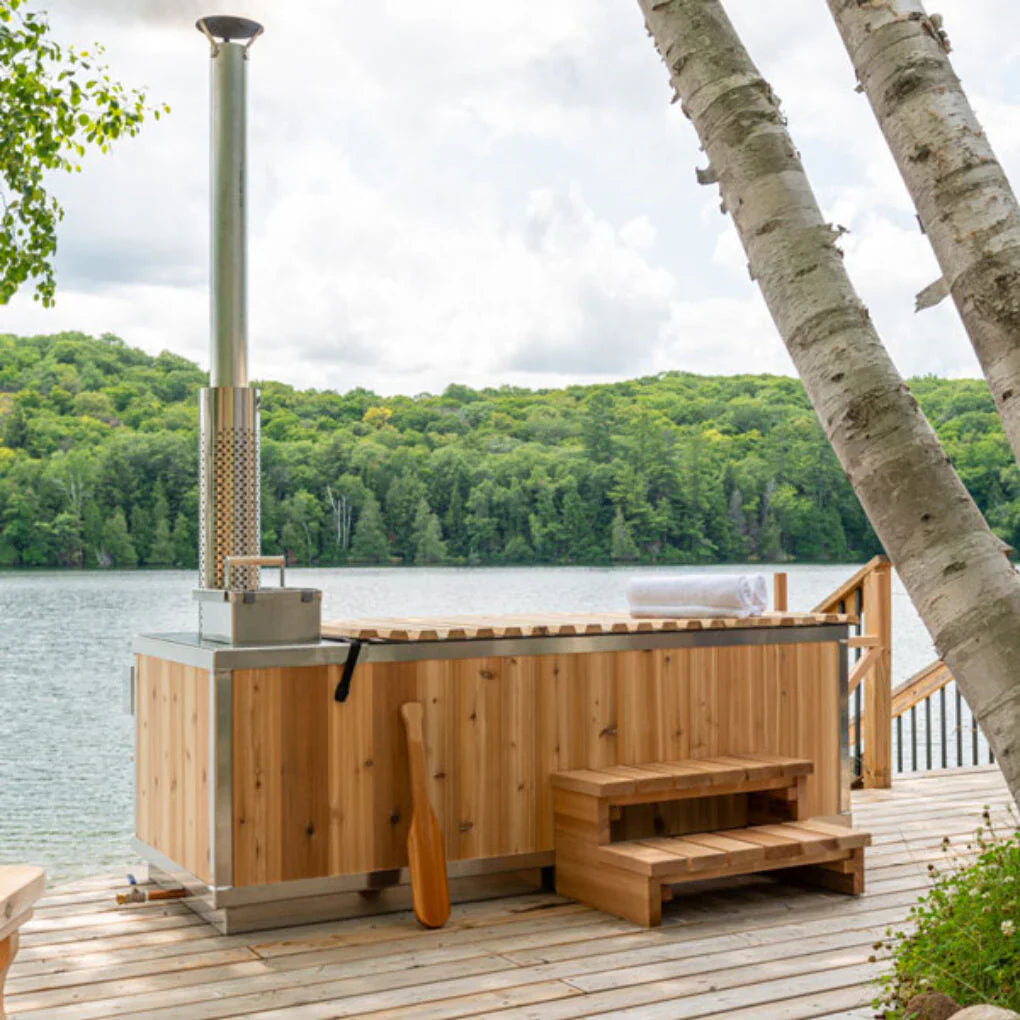
Wood Fired Hot Tubs Lifespan: Factors Influencing Durability
Wood Fired Hot Tubs Lifespan: Factors Influencing Durability
Overview
Wooden hot tubs, particularly those that are wood-fired, offer a charming and rustic experience for relaxation. Key factors impacting their durability include the type of wood used, construction quality, and regular maintenance. These hot tubs typically utilize high-quality woods such as cedar or redwood, both known for their natural resistance to rotting and insects, attributes that inherently prolong the structure's lifespan. Properly built hot tubs feature carefully designed joints and fittings, ensuring a stable, long-lasting assembly.
Regular Upkeep
Ensuring the longevity of a wooden hot tub heavily depends on consistent maintenance. Regular cleaning, ideally using gentle, non-abrasive cleansers, helps prevent the accumulation of grime and bacteria, contributing to the tub’s extended lifespan. Periodic water treatment is essential to maintain balance and discourage the growth of algae. It is important to use chemicals judiciously, as excessive use can potentially harm the wood.
It's also beneficial to safeguard the tub from environmental factors. Using a quality cover can shield it from harsh weather, prevent debris accumulation, and minimize water evaporation, all of which maintain the wood's condition for a longer period. Regular inspections for any signs of wear, such as cracks or leaks, are crucial. Addressing minor issues early can prevent them from escalating into more significant problems.
Environment and Usage
The usage frequency of a wooden hot tub can influence how quickly wear and tear appear. However, with proper care, frequent use does not necessarily shorten its lifespan. Environmental conditions play a significant role as well. Exposure to severe cold or high moisture levels can challenge the wood's durability, making protection from these elements important.
In colder climates, winterizing the hot tub is critical. This involves draining the tub and external pipes to prevent ice formation, which could lead to cracked wood or burst plumbing. An insulating cover can also be beneficial during cold months, further protecting the structure.
Selecting the Right Hot Tub
Choosing a high-quality wood-fired hot tub contributes significantly to longevity and satisfaction. Models like the Saunalife Model S4 Wood Fire Hot Tub and the Starlight Wood Burning Hot Tub are highly regarded for their robust construction and premium material usage. Cedar is a favored choice, often used for hot tubs due to its resilience and aesthetic appeal. Western red cedar, in particular, is prized for its durability and natural insulating properties, which enrich the soaking experience by retaining heat efficiently.
Heating systems vary among wood-fired hot tubs, ranging from internal wood stoves to external fireboxes. Each setup offers distinct advantages depending on preferences for temperature control and convenience. The choice between these options affects the heating time and overall use, with each style lending itself to different bathing experiences.
Sustainability and Quality
Wood-fired hot tubs also stand out for their environmentally friendly attributes. They operate without the need for electricity or chemical-intensive water treatment, promoting a more natural, sustainable experience. High-quality models are often crafted with careful attention to material origins and construction methods, ensuring a product that is not only enjoyable but also responsibly made.
The integration of materials like marine-grade aluminum can enhance the structure's robustness, offering additional resistance to corrosion and wear from continual exposure to water and thermal fluctuations.
A seasoned manufacturer like Forest Cooperage has a longstanding reputation for producing cedar hot tubs with a lifespan reaching two decades or more, assuming regular maintenance is observed. Consistent care routines ensure that these wooden hot tubs provide a retreat for relaxation year after year.
These factors collectively determine the lifespan of wooden hot tubs, ensuring that users enjoy their rustic charm and relaxing warmth for many years when properly cared for. By addressing maintenance routinely and making informed choices about materials and construction quality, owners can enjoy a durable and sustainable bathing haven in their biophilic corner of the backyard.
Frequently Asked Questions
What is the expected lifespan of a well-maintained wood burning hot tub?
With regular care, wood burning hot tubs constructed from cedar wood can last between 15 to 20 years. If equipped with aluminum or fiberglass inserts, these tubs might last significantly longer.
What elements influence the longevity of wood burning hot tubs used outdoors?
Several factors contribute to how long wood burning hot tubs last, including the type and quality of the wood used, exposure to the elements, and overall maintenance practices. Keeping the tub clean and protected from harsh weather can enhance its durability.
How often should a wood burning hot tub be emptied to preserve its quality?
To ensure the tub’s optimal condition, it is suggested to drain the wood burning hot tub every few months. This practice helps maintain water quality and allows for inspection and cleaning of the tub.
What are some typical problems that might reduce the lifespan of a wood burning hot tub?
Common issues that could shorten the lifespan of a wood burning hot tub include poor maintenance, water leaks, rot or decay in the wood, and damage from pests. Regular inspections and upkeep can help avoid these problems.
Which wood burning hot tubs are reportedly the most durable?
Wood burning hot tubs made from cedar or those reinforced with materials such as fiberglass are noted for their extended durability. Cedar's natural resistance to decay makes it a popular choice.
How does the durability of a wood burning hot tub compare to that of a Jacuzzi or similar spa products?
Compared to Jacuzzis and other similar spa products, wood burning hot tubs typically offer a straightforward, low-tech approach. While Jacuzzis might have more features, they also involve more components that can fail. Wood burning tubs can last just as long if properly cared for, although they lack some of the modern amenities of their electric counterparts.

Leave a comment